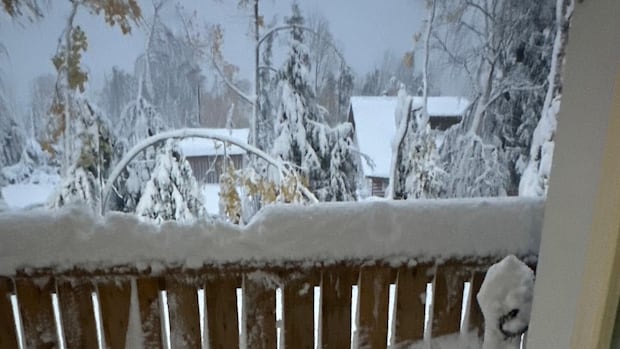Alberta regulations meant to keep old coal mines from polluting streams and lakes are failing, suggests a study by government scientists.
The study says high levels of numerous contaminants are having grave outcomes for aquatic life and their ecosystems.
Bill Donahue, one of the study’s authors and a former chief of environmental monitoring for the Alberta government, said in an interview that the study demonstrates “regulatory inaction.”
“These results suggest current reclamation practices and regulatory requirements for water quality and aquatic ecosystems are not meeting the desired objectives,” the authors write at the end of the report.
The peer-reviewed study is by three Alberta government scientists and Donahue, who is now an environmental consultant.
They took samples from rivers near three old coal mines south of Hinton, Alta., which are four kilometres from Jasper National Park at their closest point. The mines closed in the early 2000s.
‘Persisting threat’ of selenium
The authors discovered some improvements to water quality since mining activities ended. But in rivers downstream from those mines, they found high concentrations of several pollutants in the water.
In the Luscar Creek and Gregg River, for example, nickel ratios were 200 times higher downstream from the mines than in water upstream.
Planned expansion of the Vista coal mine near Hinton, Alta., would make it the largest mine of its kind in North America. After five months of consideration, the Impact Assessment Agency of Canada says the project can go ahead without a federal study exploring the potential environment and social impacts of it. The CBC’s Acton Clarkin reports.
In the nearby McLeod River Basin, they determined selenium levels and other ions provide a “persisting threat to water quality,” even though one mine has been nearly fully reclaimed and another is 60 per cent reclaimed.
The authors looked at the number of samples in which selenium concentrations exceeded Alberta’s protection of aquatic life guideline, a limit the province uses to determine when contamination levels would likely cause harm to an ecosystem.
At six locations, 98 to 100 per cent of testing samples found selenium concentrations exceeded that limit.
They write that elevated selenium levels have “insidious” effects on certain fish and birds, because the substance is passed down from parents to offspring and presents in deformities and impairs their ability to reproduce. It is otherwise a naturally occurring element that’s vital in small amounts.
The authors also note the McLeod River Basin is home to Athabasca rainbow trout, listed as endangered Canada’s Species At Risk Act — a law created to protect and recover at-risk species.
They write that the trout is likely to go extinct. More broadly, they write that a growing body of research shows “reclamation and mitigation practices may not restore aquatic habitat or reverse ecological damage.”
A ‘warning flag’ for future coal
Donahue said he’s unsure proper regulations can be created to reverse the impacts of coal mining, because there is little historical evidence companies have been able to do so after they’ve ended operations, no matter how much money they spend.
“The big lie is that Albertans seem to think that the regulator is going to look at what’s submitted and, if those promises and requirements aren’t met, then the company is going to have to fix it,” he said.
“Well, here’s the paper that says that’s not true.”
Donahue also called the study a “warning flag” for future coal projects in Alberta.
Earlier this year, the Alberta Energy Regulator granted an Australia-based coal company permission to start a controversial coal exploration on the eastern slopes of the Rockies, concluding the small-scale project likely won’t have any effect on water quality downstream.
The regulator said at the time that it couldn’t consider the possibility that the exploration permit might lead to a full-blown coal mine in the future.
Country musician Corb Lund calls himself ‘a reluctant anti-coal mine activist’ but says his opposition to new coal exploration in his home province unites Albertans from across the political spectrum.
Ryan Fournier, press secretary for Alberta’s environment ministry, said the province has shared the study with the regulator and it’s one of the reasons the province isn’t allowing any more open-pit mines.
It’s up to the regulator to decide if more monitoring or actions are needed in the bodies of water referenced in the study, Fournier said, adding selenium levels sometimes exceeded fish protection alert levels but there’s currently no evidence of population decline.
“These results are also why any new mines will be required to either be underground mines or use advanced selenium management techniques and deploy state-of-the-art technology and monitoring to protect the surrounding environment,” he wrote in a statement.
The regulator said in a statement it’s reviewing the findings.
Asked if it was aware of selenium concentrations in Luscar Creek or Gregg River, the regulator said it has a long-standing requirement for approval holders to reduce selenium concentrations to levels that don’t affect the aquatic environment and it has tools to enforce regulatory compliance.
“Achievement of selenium reduction objectives is expected to progress over multiple years as mines advance towards reclamation,” it said.








